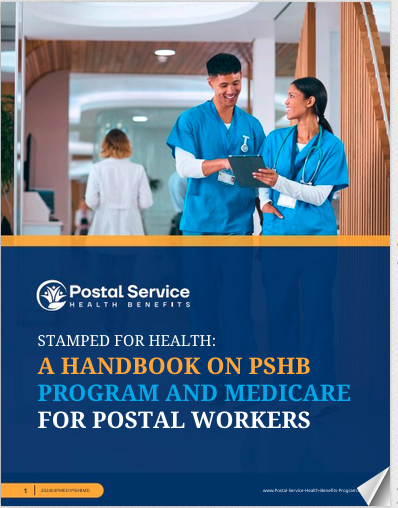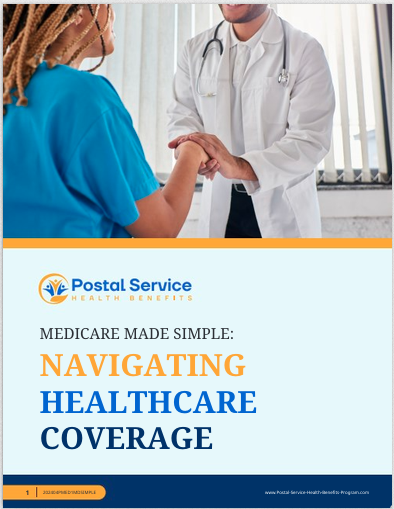Key Takeaways
- The Postal Service Health Benefits (PSHB) program is set to replace the Federal Employees Health Benefits (FEHB) program for USPS workers, with experts weighing in on its potential advantages and challenges.
- USPS employees and retirees need to consider how this change might impact their coverage, particularly in relation to costs, plan options, and overall health benefits.
Will Your New USPS Health Plan Be as Good as the FEHB? What Experts Are Saying
As the U.S. Postal Service (USPS) transitions its employees and retirees from the longstanding Federal Employees Health Benefits (FEHB) program to the new Postal Service Health Benefits (PSHB) program, many are left wondering: Will the new plan be as good as the FEHB? With questions about coverage, cost, and benefits circulating, experts are weighing in to help USPS workers understand what this change means for their healthcare coverage.
What is the Postal Service Health Benefits (PSHB) Program?
The Postal Service Health Benefits (PSHB) program is a newly established health insurance system designed exclusively for USPS employees, annuitants, and their eligible family members. It is set to officially replace the FEHB program by January 2025. While the FEHB has been the go-to health insurance for federal employees, the PSHB was introduced as part of the Postal Service Reform Act of 2022 to specifically cater to the unique needs of USPS employees.
This shift raises critical questions regarding how similar or different the PSHB will be compared to the FEHB. With over 1.7 million active and retired USPS workers, understanding the implications of this change is crucial to ensuring that employees and retirees maintain the level of care they need.
The Key Differences Between FEHB and PSHB
While the Postal Service Health Benefits program is built on the same foundation as FEHB, there are notable distinctions that workers and retirees should be aware of. One of the major differences is the separation of the PSHB from the broader federal pool of employees covered under FEHB. This change allows USPS employees to be part of a separate risk pool, which could have an impact on premiums and coverage options.
Additionally, unlike the FEHB program, the PSHB will require all Medicare-eligible retirees to enroll in Medicare Part B. This has raised concerns among some USPS retirees, as they may have to bear the extra cost of Medicare Part B premiums. For those who have postponed enrolling in Medicare, the PSHB mandates that they sign up to avoid penalties and ensure continued coverage.
Will Coverage Options Be the Same?
One of the most pressing concerns is whether PSHB will offer the same wide variety of coverage options as the FEHB. The FEHB is known for offering hundreds of plans across various providers, giving federal employees considerable flexibility in choosing the coverage that best meets their needs. Experts suggest that while the PSHB may not offer as many plan options, it will still aim to provide a sufficient range of choices that cater to the healthcare needs of USPS employees and retirees.
However, with the plan’s benefits and options still in development, it remains unclear how the PSHB’s offerings will compare to the broad array available under the FEHB. The transition period leading up to 2025 will provide further clarity as USPS works with insurance providers to finalize the options available under PSHB.
What Are the Concerns Around Costs?
The issue of cost is always at the forefront of any healthcare discussion, and USPS employees are understandably concerned about how the shift to the PSHB will impact their premiums and out-of-pocket expenses. While the FEHB has historically provided affordable options for federal workers, the creation of a separate risk pool under PSHB could lead to changes in premium rates for USPS employees.
Experts believe that premium stability will depend largely on the size of the risk pool and the health of its members. With the PSHB being exclusively for USPS employees and their dependents, the health profile of this group will play a significant role in determining future premium costs. On the positive side, the Postal Service Reform Act ensures that the federal government continues to contribute to the premiums, helping to offset some of the costs for USPS workers.
What Experts Are Saying About the Transition
Health policy experts have weighed in on the potential benefits and challenges that the new Postal Service Health Benefits program could present. On one hand, some argue that the PSHB could offer more tailored benefits for postal workers, as the plan is designed specifically with their needs in mind. By separating USPS from the larger federal workforce, there may be opportunities to customize coverage and care that better fits the unique demands of postal work, which often involves physically demanding tasks and exposure to environmental hazards.
On the other hand, concerns about coverage gaps and increased costs for retirees who are required to enroll in Medicare Part B have also been raised. For those retirees who are currently enrolled in FEHB but not Medicare, the shift could mean additional monthly premiums for Medicare Part B, creating financial strain for individuals on a fixed income.
Will PSHB Offer Better or Worse Coverage?
The big question remains: Will the PSHB program be as good as the FEHB? Experts indicate that the quality of coverage will largely depend on the final structure of the PSHB. Some industry insiders are optimistic that the plan will offer comparable benefits, while others caution that the separation from FEHB could lead to more limited options and higher costs in the long term.
The Postal Service Reform Act is designed to ensure that USPS retirees maintain affordable healthcare, but the real test will be in how the PSHB program is implemented. Much will depend on how well USPS negotiates with healthcare providers to offer competitive plans that mirror the flexibility and affordability of FEHB.
How to Prepare for the Transition to PSHB
For USPS employees and retirees, the best course of action is to stay informed and start preparing for the switch to PSHB. Since the program will officially launch in 2025, there is still time to review your current healthcare needs, evaluate how the shift to Medicare Part B might impact you, and explore the options that PSHB will provide.
It’s essential to consider whether enrolling in Medicare Part B now could be beneficial. For retirees who are not yet enrolled, it might be worth calculating how the premiums for Medicare Part B compare to your current FEHB plan and determining whether early enrollment could save you from penalties later on.
What USPS Workers and Retirees Should Watch For
As the details of the PSHB program continue to unfold, there are several factors USPS employees and retirees should pay attention to:
-
Plan Options: Watch for announcements on the available healthcare plans under PSHB. Knowing your options will be key to choosing a plan that meets your needs.
-
Costs: Keep an eye on any changes in premium costs, particularly if you are approaching Medicare eligibility. Budgeting for potential Medicare Part B costs is critical.
-
Medicare Enrollment: If you are Medicare-eligible but haven’t enrolled in Part B, now is the time to start thinking about the best time to sign up to avoid penalties.
-
Open Enrollment Periods: Ensure you know the PSHB’s open enrollment period so you can make any necessary changes to your coverage as the transition takes place.
Healthcare for USPS Workers: The Future of PSHB
The future of healthcare for USPS workers and retirees hinges on the successful rollout of the PSHB program. As with any new program, there are bound to be challenges, but there is also optimism that this change will provide USPS workers with tailored coverage designed to meet their specific healthcare needs. For now, it is crucial to stay informed, review your options carefully, and be prepared for the upcoming transition to ensure your healthcare needs continue to be met.







